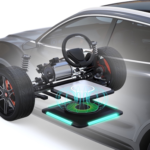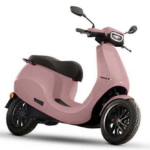
The rise of electric bikes as a sustainable and efficient means of transportation has been remarkable. However, there are still several challenges and myths surrounding electric bikes that hinder their widespread acceptance.
In this article, we aim to address and overcome these challenges and debunk common myths associated with electric bikes. By providing accurate information and insights, we hope to promote a better understanding of electric bikes and encourage their adoption.
Myth: Electric bikes are slow and lack power
One of the common myths about electric bikes is that they are slow and lack power. However, this misconception is outdated. Advancements in electric bike technology have revolutionized their performance capabilities.
Electric bikes are equipped with powerful motors that provide instant torque, enabling riders to accelerate quickly and effortlessly. With different power assist levels, riders can choose the level of assistance according to their preference and terrain.
Electric bikes can reach speeds of up to 20-28 mph (32-45 km/h), depending on the model and local regulations. They offer a thrilling and dynamic riding experience that challenges the myth of being slow and lacking power.

Myth: Electric bikes have limited range and battery life
Another prevalent myth surrounding electric bikes is that they have limited range and battery life, leading to range anxiety. However, significant advancements in battery technology have addressed this concern. Modern electric bikes are equipped with high-capacity lithium-ion batteries that offer extended range and improved longevity.
Depending on the battery capacity and assist level used, electric bikes can travel 40-100 miles (64-160 km) on a single charge. Additionally, regenerative braking technology allows the battery to recharge while riding, further extending the range. It’s important to note that various factors, such as terrain, rider weight, assist level, and weather conditions, can influence the range of an electric bike.
By understanding these factors and planning rides accordingly, riders can overcome range anxiety and confidently enjoy their electric bike journeys.
Myth: Electric bikes are expensive and not cost-effective
Many people believe that electric bikes are expensive and not cost-effective. However, when considering the total cost of ownership, electric bikes can be a more economical option compared to traditional vehicles.
While the upfront cost of an electric bike may be higher than that of a conventional bicycle, it is significantly lower than purchasing a car or motorcycle. Electric bikes eliminate the need for fuel, insurance, parking fees, and costly maintenance associated with motor vehicles.
Additionally, the cost of charging an electric bike battery is considerably lower than the cost of refueling a gas-powered vehicle. Over time, the savings in fuel and maintenance costs can make electric bikes a cost-effective transportation choice.
Myth: Electric bikes are difficult to maintain and repair
Contrary to popular belief, electric bikes are relatively easy to maintain and repair. They have fewer moving parts compared to traditional vehicles, which simplifies the maintenance process.
Routine maintenance tasks include keeping the bike clean, checking tire pressure, and lubricating the chain. Electric bike manufacturers often provide detailed instructions and resources for maintenance and troubleshooting.
Additionally, local bike shops and specialized electric bike retailers offer repair services and access to spare parts. Electric bikes are designed to be user-friendly, making maintenance and repairs accessible to riders of all skill levels.
Myth: Electric bikes are only for the elderly or unfit
Another misconception surrounding electric bikes is that they are exclusively meant for the elderly or unfit individuals. However, electric bikes cater to a wide range of users, irrespective of age or fitness level.
Electric bikes offer various assist levels that allow riders to choose the level of physical exertion they desire. They can be used as a fitness tool, where riders pedal without assistance, or as a means of transportation, where the electric motor provides support during longer commutes or uphill rides.
Electric bikes encourage physical activity and can serve as an alternative to cars for daily transportation, benefiting individuals of all ages and fitness levels.
Also read: 10 Best Electric Scooters To Buy Under 1.5 Lakh In India In 2023
Challenge: Limited charging infrastructure
One of the significant challenges in the widespread adoption of electric bikes is the limited charging infrastructure. While electric bikes can be charged using a regular household power outlet, the availability of public charging stations is limited compared to gasoline stations.
However, this challenge is being addressed with the rapid expansion of charging infrastructure in urban areas. Governments and private entities are investing in the installation of public charging stations to encourage electric mobility. Additionally, innovative solutions such as battery-swapping stations are being explored to further overcome the limitations of charging infrastructure.
Challenge: Perception and acceptance of electric bikes
Overcoming the challenge of perception and acceptance is crucial for the widespread adoption of electric bikes. Some people still associate electric bikes with traditional bicycles and may have reservations or misconceptions about their capabilities.
To address this challenge, it’s essential to raise awareness about the benefits and features of electric bikes. Education initiatives, promotional campaigns, and testimonies from electric bike riders can help dispel myths and build a positive perception of electric bikes as a practical and sustainable mode of transportation.
Challenge: Regulatory frameworks and safety standards
The establishment of appropriate regulatory frameworks and safety standards is vital for the safe and responsible use of electric bikes. Electric bikes should adhere to safety regulations, including speed limits, lighting requirements, and appropriate labeling.
Collaborative efforts between industry stakeholders, government authorities, and standardization bodies are necessary to develop comprehensive regulations and safety standards for electric bikes. This ensures the reliability, quality, and user safety of electric bikes in the market.
Conclusion
Electric bikes have the potential to revolutionize transportation by offering a sustainable, efficient, and enjoyable mode of travel. Overcoming challenges and debunking myths associated with electric bikes is essential for their widespread acceptance and adoption. Advancements in technology, increased charging infrastructure, educational initiatives, and regulatory frameworks play a crucial role in shaping the future of electric bikes. By embracing electric bikes as a viable transportation option, individuals can contribute to reducing carbon emissions, improving air quality, and creating more sustainable communities.
FAQs (Frequently Asked Questions)
1. Do electric bikes require a license or registration?
In most countries, electric bikes with certain specifications, such as limited motor power and maximum speed, do not require a license or registration. However, regulations may vary depending on the jurisdiction. It’s important to familiarize yourself with the local laws and regulations regarding electric bikes before riding.
2. Can I ride an electric bike in the rain?
Electric bikes are designed to withstand various weather conditions, including light rain. However, it’s recommended to take precautions such as covering the battery and controller, using fenders to protect against splashes, and ensuring proper maintenance to prevent water damage. Riding in heavy rain or flood conditions should be avoided for safety reasons.
3. How long does an electric bike battery last?
The lifespan of an electric bike battery depends on various factors, including the battery type, usage patterns, and maintenance. Typically, lithium-ion batteries used in electric bikes have a lifespan of 2 to 5 years or around 500 to 1000 charge cycles. Proper charging, storage, and maintenance can help maximize the battery’s lifespan.
4. Can I ride an electric bike without pedaling?
Electric bikes are designed to be pedal-assisted, meaning they provide motor assistance while you pedal. However, many electric bikes also offer a throttle mode that allows you to ride without pedaling. Throttle mode can be useful for starting from a standstill or navigating steep inclines. Check local regulations to ensure compliance with throttle mode usage.
5. Are electric bikes suitable for long-distance rides?
Electric bikes are well-suited for long-distance rides, thanks to their pedal-assist functionality. The electric motor provides assistance, reducing physical exertion and allowing riders to cover longer distances with ease. However, factors such as battery capacity and charging options should be considered when planning long-distance rides.
By addressing challenges and debunking myths, electric bikes can play a significant role in transforming our transportation landscape. With the increasing focus on sustainability and eco-friendly alternatives, electric bikes offer a practical solution that combines convenience, efficiency, and environmental consciousness. Embrace the future of transportation with electric bikes and enjoy a greener and healthier way to move around
Here are some more articles on Electric Bikes.








